- Home
- Jackie French
Year in the Valley Page 2
Year in the Valley Read online
Page 2
Chocolate wombat re-established his territory last night. There were wombat droppings at regular intervals when we came out this morning.
‘Why are they green?’ asked E, prodding the droppings with his gumboot.
‘Green grass,’ I said. ‘The grass was tough and brown before and that’s why his droppings were different – darker and drier.’
E nodded. He’s at the age to be interested in droppings – the wallaby droppings on the flat and the possum droppings on the rocks by the creek.
‘Why are they on the rocks?’ he asked.
I pointed upwards. ‘They dropped down from the tree.’
‘Oh,’ said E and bent down to poke them apart with a stick to see what they’d been eating.
I wish we’d get more rain. The droppings will be brown again before we know it.
September 6
Picked the first asparagus today – pale purple ludicrously phallic heads pushing through the dirt. At first you think there’s hardly any, then after ten minutes’ kneeling you realise you have both hands full, and after half an hour your jumper is full too. (Bryan complains my jumpers are always out of shape and stained as well; but if you have a full-sized bosom, things naturally dribble onto your bust.)
I steamed today’s asparagus for lunch, except for three bits I nibbled in the garden and the stalk Bryan pinched from the bench and the three stems I saved for E after school. Later we’ll cover the asparagus with mustardy vinaigrette or bearnaise sauce or simmer it in soup. But not today.
Afterthought: why don’t people grow more asparagus? It grows itself, despite its finicky reputation – just toss it a handful of food in summer and you can pick it all through spring – in fact we haven’t bothered feeding ours for years; though I will this summer, I promise. (As I’ve promised for the last two years.) It’s pretty too, in a suburban ferny sort of way, and the birds love the berries.
I always wonder why the wombats don’t eat asparagus; surely the tips are tempting for a wombat? But they don’t. The odd stalk is trodden on; and the black-tailed wallabies have a munch, but they don’t like it and spit it back onto the ground (which is odd when you think about it, as black-tails like everything else, from marguerite daisies to orange leaves and pansies).
The bowerbirds are eating the cumquats outside my study window as I write, four fluffy green females or youngsters and one dark velvet male, and a lyrebird is perched up in the loquat tree.
Lyrebirds are ludicrous birds. I don’t know why everyone thinks they’re beautiful. Probably because so few Australians ever see a lyrebird – just pretty pictures of their tails extended (which they very rarely are) so you can’t see the ungainly body at all. And of course they look a bit like peacocks, and peacocks have grandeur so lyrebirds must too.
Lyrebird necks are too long, their heads too small, their beaks too wide, their bodies scrawny, their legs like wrinkled chopsticks and their feet the most fearsome weapon a vegetable garden has to face. (I thought we had wild pigs the first time I saw an orchard churned up by lyrebird feet.)
Of course, their song is glorious, though some are much better singers than others. (The present lot around here are pretty feeble, but I remember one ten years ago – whole symphonies echoing through late winter mist.)
E gazed with satisfaction at the steadily leafing peach trees in Wisbey’s orchard this morning on the way down to the school bus. ‘Soon,’ he said happily.
Fragrant Window Cleaner
I washed the windows today (well, some of them). We’re knee-deep in clear gold light. You don’t realise how filthy windows are till the sun is higher in the sky and suddenly all winter’s dust and rain spots are shining clear.
peel of 2 lemons
1 cup lavender flowers
2 drops eucalyptus oil
1 cup methylated spirits
Mix. Place in a jar and leave overnight. Strain. Add 1 tablespoon to half a bucket of water. Wipe on windows and wipe off with a clean cloth.
September 7
Gabby arrived today, in a cardboard box with her special blanket and a sack of Womba-roo – a special milk formula for marsupials, and a heck of a lot easier than the brews I had to concoct a decade or so ago (of soy milk and egg yolk and Farax and vitamins and cod liver oil and I can’t remember what else…).
Gabby is small and round and brown; almost a toy wombat.
We get orphaned wombats regularly from the Wildlife Information & Rescue Service (WIRES). Our job is to reaccustom them to the bush. Any wombat or roo brought up by humans has almost no chance of survival if it’s put straight back into the wild. Its education has to be gradual.
So we feed them and pet them but let them know (firmly – you must be firm with wombats, as they are possibly the world’s most dogmatic species and need no-nonsense convincing) that they are creatures of the outdoors, not the kitchen. And sooner or later they leave…
Sometimes it takes two months for them to realise they are wombats and turn their backs on us; sometimes it takes two years, but eventually their absences from the house get longer and longer…and I miss them desperately, even with all the other wombats here. I suppose that’s what a parent feels like when one child is gone – all the others combined never quite fill the empty place.
Gabby was shut-eyed and hairless when she was given to WIRES – she’d be the youngest wombat ever to be reared successfully by humans, I think. Now she is brown-eyed and hairy. She has a slight touch of mange or eczema, perhaps brought on by stress; the two wombats she was raised with ‘went bush’ a month ago and she’s still upset by their absence. I’ll inject her tonight, and then again in ten days’ time; mange can be agony for a wombat, and often fatal.
Gabby seems a bit dullwitted; I don’t think it’s just that she’s sleepy or upset by the change. [NOTE: FROM 2010: Gabby almost certainly was infected by toxoplasmosis, caught from cats. It is very infectious and can make wombats dullwitted, so much so they may not survive.]
Wombats are normally intelligent creatures about anything that interests them, which is basically food and dirt. I put a carrot in front of Gabby and she had to think about it for perhaps a minute before she ate it.
‘Do you think she’s brain damaged?’ asked Bryan, but I don’t know. Perhaps there was brain damage before she was rescued from the corpse of her mother – a roadkill left bloated at the side of the bitumen till someone passing finally looked inside the pouch.
Gabby is definitely not as bright as the other wombats we’ve taught to be wombats – or at least kept an eye on while wombathood reclaimed them. We start by introducing them to the wombat hole behind the bathroom. They stop, sniff, push into the darkness cautiously but firmly; then return half an hour later covered in mud with toothy wombat grins that say: ‘Ah dirt! So this is what being a wombat is all about.’
Gabby sniffed, paused, sniffed again. And then looked at us as though to say: ‘Don’t you realise it’s dirty in there?’ and trotted back inside and onto the sofa.
But she is not a cat; she’s a wombat. And she has to learn that dirt is her destiny.
September 8
Chocolate has accepted Gabby; I thought he probably would, as she’s female. He gave the last baby wombat here a hard time. That was Ricki, another WIRES product, who now lives down on the flat and only visits here occasionally. Ricki learnt early to acknowledge Chocolate as head wombat, and still does.
Maybe Chocolate doesn’t think Gabby is a real wombat (she still hasn’t taken to the hole and probably smells more of kitchen than soil); or maybe she’s too small to bother with. He did covet her carrot tonight. He tried to grab it out of her mouth, but she wouldn’t let go; so he ate half and she ate half till they met in the middle of the carrot, nose to nose – which looked ridiculous as Gabby is tiny and Chocolate is the largest wombat I’ve ever come across, a massive body, square nose and the lushest whiskers ever seen down a wombat hole.
I give Gabby her bottle by the wombat hole, to let her get used to the hole’
s smell. I’ve stuffed her blanket in there too, so she has something familiar. Chocolate doesn’t like that hole (I think it’s too narrow for him anyway). He has his own palatial complex up the hill. All the baby wombats we’ve had have lived in the bathroom hole for a few months, then moved out to better quarters as they’ve grown more confident.
Still no rain; and it’s getting warmer. The creek is still chortling to itself, but come the first day of real heat it’ll shrink between the rocks.
September 10
At 2 a.m. Gabby scratched at the back door.
‘If we let her in she’ll think we’ll come down and play with her every night,’ muttered Bryan. He went back to sleep. I didn’t.
Gabby kept scratching. The scratches are millimetres deep this morning. When scratches didn’t work, she chewed. (Three nights gnawing is enough to demolish a wooden door, which is why our doors are reinforced with steel sheeting. Luckily the rest of the house is made of granite, which defeats even wombats – so far.) By 3 a.m. she was shoving with the full force of wombat shoulders.
At 4 a.m. I fell asleep.
I woke at seven and fumbled down the stairs. The bottom step was occupied by a small boy and a wombat.
‘I think you’re cruel,’ said E reproachfully. ‘She’s been outside all night.’
‘She’s supposed to be outside,’ I said. ‘She’s a wombat.’
‘I still love you, Gabby,’ said E, ignoring me and cuddling the wombat closer, covering his pyjamas with mud.
When I was young I used to dream of being captured by aliens from Alpha Centauri who’d offer me the universe (this was mostly in my maths class). I’ve never lived with aliens, but I’ve lived with wombats. Wombats are as close as I’m likely to get to aliens from Alpha Centauri. Most animals humans know are domesticated. They’ve become humanised over the years. Not wombats.
You can’t teach a wombat to be ashamed, as a dog will be ashamed if it’s disappointed you. You can make a wombat afraid but you can’t teach it right or wrong. Wombats are eternal arbiters of their own morality. You can never domesticate a wombat, though a wombat will often successfully tame you.
The first wombat I lived with was Smudge. The shed I lived in was on Smudge’s territory. Every night he’d inspect it – inside the cupboards and under the bed – and if I didn’t leave the door open he’d push it in.
We’d eat breakfast together as the sun slid above the ridge. I followed him about the bush, first from loneliness, and then for a deeper reason, as I learnt for a time how not to be human, to look at the world in different ways. (Those nights formed the basis for my gardening theories, and my fiction…which is another story.)
Smudge liked company at breakfast. He liked company at night, sitting on the hill watching the moonshadows deepen round the trees. He loved music – preferred Mozart, hated the Rolling Stones (marched down to the creek till I turned off the tape deck), sat for hours in the doorway as I played Bach. Smudge is the only animal, human or marsupial, who’s enjoyed my violin playing. He’d sit until I stopped, then wander off.
Smudge died in the last year of the drought. In the last months he’d grown thin, even though I watered the grass around the shed with the dishwater. He panted for three days, then lay down in the shade of the young corn.
Smudge was a friend, not a pet. He’s buried at the end of the vegetable garden. A wallaby grazes there now.
Meanwhile Gabby has padded out the back door, over the doormat she chewed up last night (I don’t know why I buy doormats). She’s waiting for her carrots. Then she’ll go to bed – in the wombat hole if we can coax her in, otherwise spread out on the remnants of the doormat.
It’s not like living with a wild wombat. I’ll probably never live so close to a genuinely wild animal again. Those were the days before commitments, the cries of ‘Mum where’re my socks?’, electric light and column deadlines. To live with a wild animal you have to bend to its timetables. I can’t, any more. I’m too preoccupied for rambles in the dusk.
But…it was about a year ago. I looked out the window. E was under the persimmon with a wombat. I thought it was Fudge – the WIRES wombat we were caring for then. (When I last saw Fudge she was big and bold and hairy, living on the far side of the creek.) I looked again.
It was a wild wombat – Chocolate. E was feeding him a carrot and Chocolate was eating it, with a puzzled look as though to say: ‘I’m not sure what’s happening but it’s nice…’
Chocolate is E’s friend, not mine, though he accepts my nightly handout of carrots and the occasional rolled oats or wombat biscuit (made of extruded lucerne and who knows what else – a factory in South Australia makes them). Sometimes boy and beast wander together in the twilight, while I chop onions in the kitchen.
If the aliens landed tomorrow and offered me the universe I’d have to check my diary first. But now I think they’d make their invitation to the next generation.
Lime Juice Carrots
One more month and the carrots will have gone to seed – tough centres and great white umbrella tops fuzzy with hoverflies. I’m inspecting them every day for signs of incipient seediness, and using them as fast as I can. (No, I’m not feeding them to Gabby. Home-grown carrots are wasted on wombats. We buy hers at the supermarket.)
1 tablespoon olive oil
1 dessertspoon mixed chopped parsley, garlic chives, shallots (or whatever green stuff you can get hold of)
1 cup water
4 large carrots, peeled and thickly sliced (the shape is up to you)
1 teaspoon very thinly sliced lime zest, with no white
1 dessertspoon lime juice
2 teaspoons brown sugar (you may need more if your carrots are shop bought, or less if they are home grown and sweet)
Sauté green stuff in the oil till wilted. Add everything else and simmer till the water has evaporated.
Serve hot as an accompaniment, or cold as a salad.
September 11
The air is utterly still, blanket grey, cold clouds trapping yesterday’s smoke. Suddenly everyone is burning off before the start of the fire season on October 1, but despite the rain a few weeks ago everything is dry again, so that the flames guzzle the dead bark and leaves and leap up into the trees, red spires laughing at the people who thought they could control them.
Yesterday morning the sky was blue, that special deep spring blue that says there’s a wind too high to touch; and then the smoke dusted the valley, so yesterday’s lunch party was interrupted by calls to man the tankers or the radio shack – two major bushfires from so-called ‘burning off’. (They were warned it was too hot, too dry, too windy, too late to burn safely.)
The fires are under control today. We climbed the mountain behind the house early this morning to look for smoke spires, but the air is so thick with smoke it’s hard to see where any is rising; but homogeneous air usually means some degree of safety. And besides, there’s no updraught today to feed the fire. Yesterday was howling – only maniacs would light fires yesterday. As we head into a hot dry summer it’s frightening to realise how many maniacs are around.
Russell the goat man lit the hill above Major’s Creek last weekend in gale-force winds – the trees are brown or black and there’s no undergrowth any more in the wet gullies. But at least the surrounding houses were saved.
The very early peaches down the valley are in leaf now, looking quite uninteresting. It’s too early to see the peaches from the road yet, as they are nestled against the twigs. The main orchards aren’t pink yet just that slightly furry bud swelling you can only see close up.
It’s a waiting time now: a touch of plum blossom out here, and the first of the apricot flowers, and every morning I inspect the crab-apples and try not to think how fast all this could be killed if fire sweeps up the valley or flares across the ridges.
I found Gabby asleep in the middle of the road this morning – half an hour more and she might have died of heat exhaustion or been run over. I carried her up to the wood sh
ed and laid her in the shade. (I couldn’t manage stuffing her down the hole.) She’s a small wombat, but feels like a sack of flour after you’ve carried her for ten minutes.
All my clothes smell of wombat now. Luckily I like the smell.
September something…
I haven’t yet looked at the calendar today.
The sky is still clear blue, with smoke seeping across the horizon. Everyone is still burning off – blackened scars across the paddocks and along the roads where, come Christmas time, some idiot (always) will throw out a still-smouldering cigarette butt.
Suddenly everything is flowering – or almost – the white plum flowers and the darker late peach flowers and the pale pink apricot blooms. Every day I measure the crab-apple buds. We got the first flower yesterday – maybe another week to total blooming. There’s an urgency in waiting for the blooms this year. It’s been a worse winter than most – dry and sort of savage cold; more things cut by frost than I’ve ever known, in spite of the mild beginning.
Most gardens look like blasted heaths – and summer will probably be worse. (Everyone’s asking if anyone’s heard a long-range forecast – just in case a new oracle has predicted rain in the coming two to three or six months – and they all say the same thing, that it will be dry, dry, dry.)
The river down by the school bus stop ceased flowing yesterday, leaving a white trail of flaking slime, and every day the creek level drops. The lizards are fattening on sunlight and on the million tiny black things that infest dead algae.

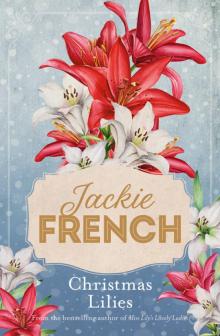 Christmas Lilies
Christmas Lilies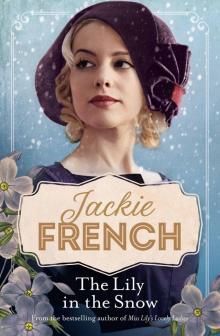 The Lily in the Snow
The Lily in the Snow The Schoolmaster's Daughter
The Schoolmaster's Daughter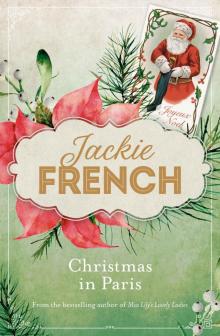 Christmas in Paris
Christmas in Paris Lilies, Lies and Love
Lilies, Lies and Love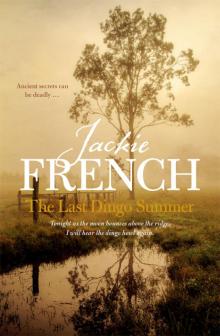 The Last Dingo Summer
The Last Dingo Summer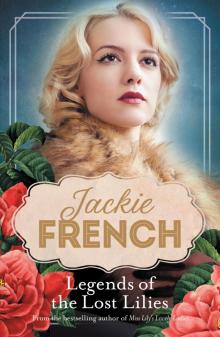 Legends of the Lost Lilies
Legends of the Lost Lilies Just a Girl
Just a Girl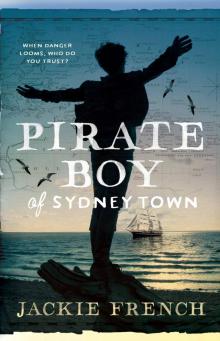 Pirate Boy of Sydney Town
Pirate Boy of Sydney Town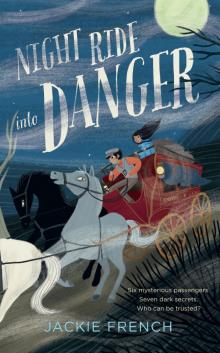 Night Ride into Danger
Night Ride into Danger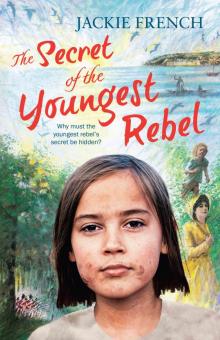 The Secret of the Youngest Rebel
The Secret of the Youngest Rebel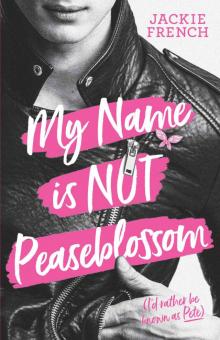 My Name is Not Peaseblossom
My Name is Not Peaseblossom Goodbye, Mr Hitler
Goodbye, Mr Hitler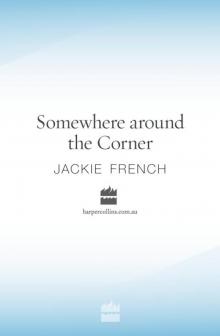 Somewhere around the Corner
Somewhere around the Corner Dingo: The Dog Who Conquered a Continent
Dingo: The Dog Who Conquered a Continent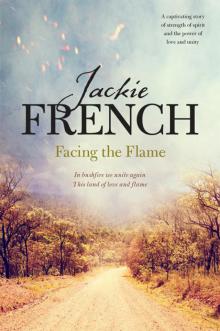 Facing the Flame
Facing the Flame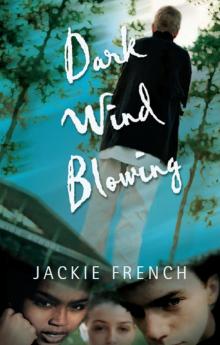 Dark Wind Blowing
Dark Wind Blowing Pennies For Hitler
Pennies For Hitler They Came On Viking Ships
They Came On Viking Ships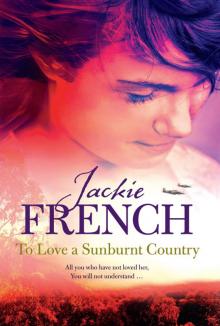 To Love a Sunburnt Country
To Love a Sunburnt Country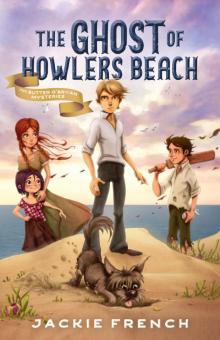 The Ghost of Howlers Beach
The Ghost of Howlers Beach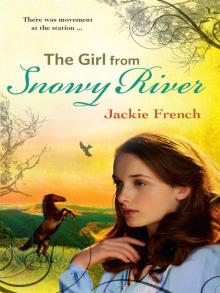 The Girl from Snowy River
The Girl from Snowy River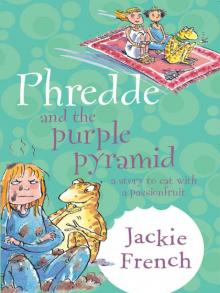 Phredde and the Purple Pyramid
Phredde and the Purple Pyramid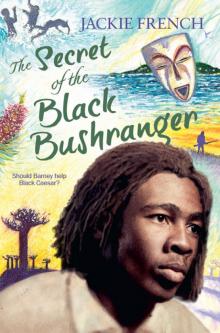 The Secret of the Black Bushranger
The Secret of the Black Bushranger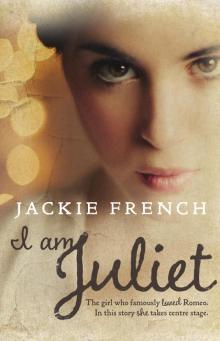 I Am Juliet
I Am Juliet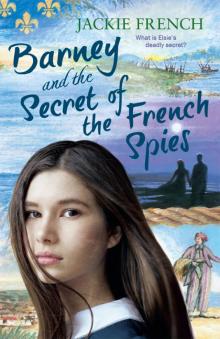 Barney and the Secret of the French Spies
Barney and the Secret of the French Spies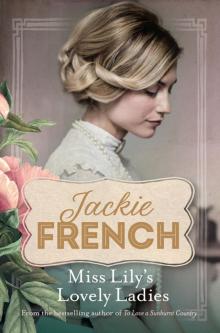 Miss Lily’s Lovely Ladies
Miss Lily’s Lovely Ladies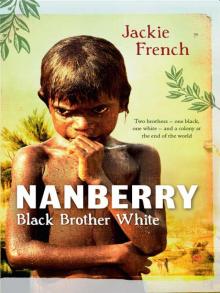 Nanberry
Nanberry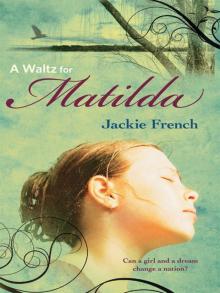 A Waltz for Matilda
A Waltz for Matilda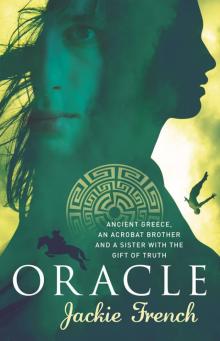 Oracle
Oracle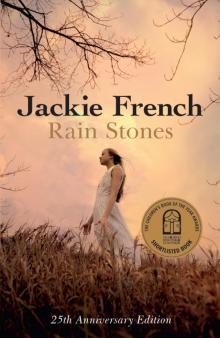 Rain Stones 25th Anniversary Edition
Rain Stones 25th Anniversary Edition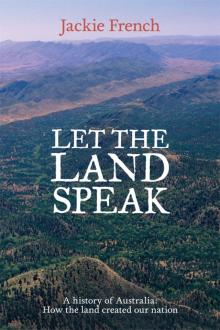 Let the Land Speak
Let the Land Speak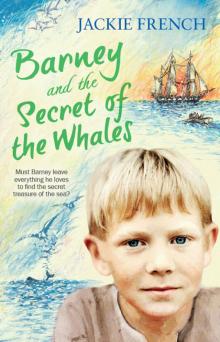 Barney and the Secret of the Whales
Barney and the Secret of the Whales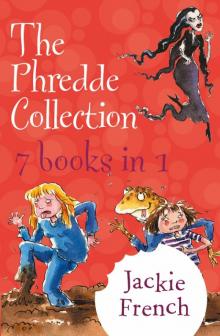 The Phredde Collection
The Phredde Collection Year in the Valley
Year in the Valley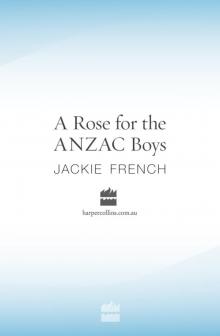 A Rose for the Anzac Boys
A Rose for the Anzac Boys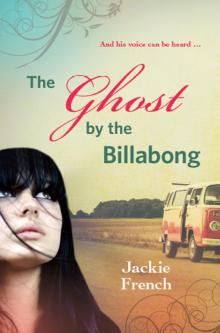 The Ghost by the Billabong
The Ghost by the Billabong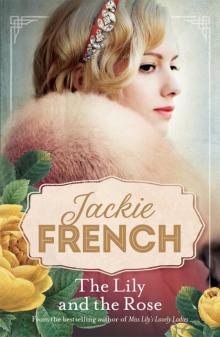 The Lily and the Rose
The Lily and the Rose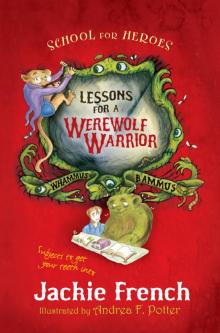 Lessons for a Werewolf Warrior
Lessons for a Werewolf Warrior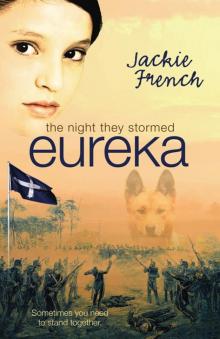 The Night They Stormed Eureka
The Night They Stormed Eureka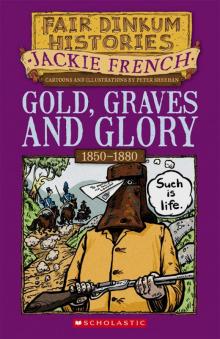 Gold graves and glory
Gold graves and glory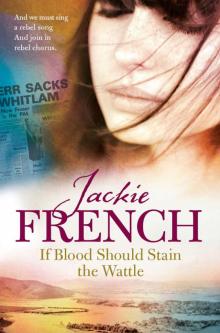 If Blood Should Stain the Wattle
If Blood Should Stain the Wattle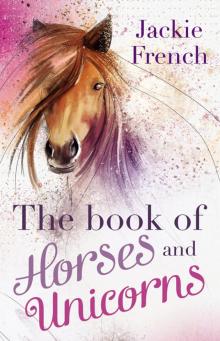 The Book of Horses and Unicorns
The Book of Horses and Unicorns Ophelia
Ophelia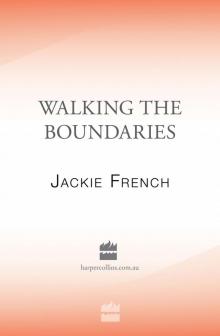 Walking the Boundaries
Walking the Boundaries Hitler's Daughter
Hitler's Daughter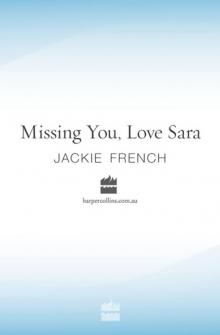 Missing You, Love Sara
Missing You, Love Sara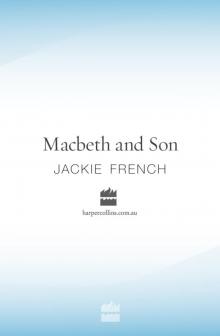 Macbeth and Son
Macbeth and Son Wonderfully Wacky Families
Wonderfully Wacky Families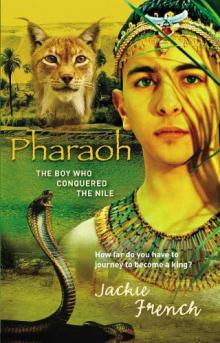 Pharaoh
Pharaoh Dance of the Deadly Dinosaurs
Dance of the Deadly Dinosaurs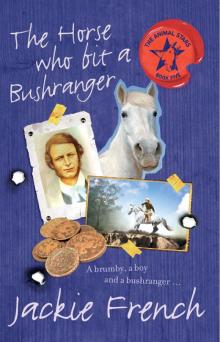 The Horse Who Bit a Bushranger
The Horse Who Bit a Bushranger One Big Wacky Family
One Big Wacky Family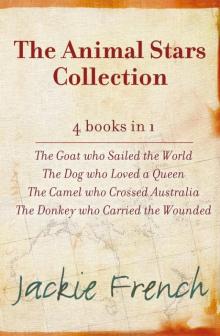 The Animal Stars Collection
The Animal Stars Collection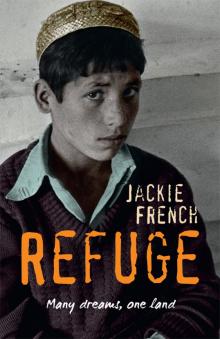 Refuge
Refuge Third Witch
Third Witch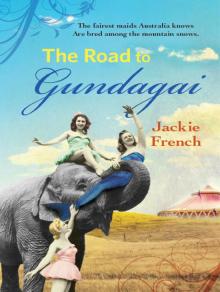 Down the Road to Gundagai
Down the Road to Gundagai